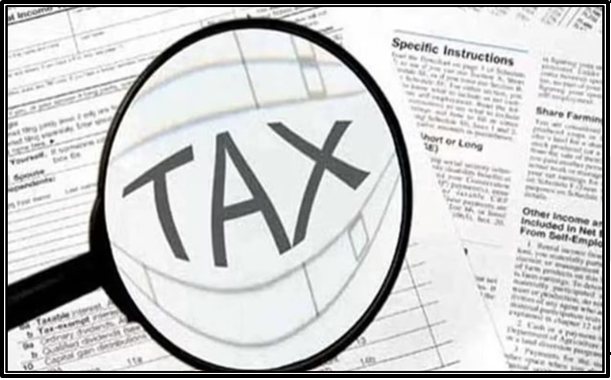THE RATIONALE FOR THE TAX PROPOSALS
source:indianexpress.com
Relevance: GS 3 – Indian Economy, Government Budgeting, Taxation
Focus:
- This analysis examines the tax proposals in the 2024-25 Budget, focusing on their objectives, impacts, and the broader economic context.
- It reviews the specific proposals designed to incentivize particular sectors and general tax policy changes.
Current Scenario:
- Economic Context: The 2024-25 Budget aims to address economic recovery post-pandemic, fiscal
- consolidation, and promote sustainable growth.
- Tax Policy: The tax proposals are designed to balance revenue generation with stimulating economic activity and investment.
Key Proposals:
Incentives for Specific Sectors:
- Manufacturing Sector: Introduction of tax breaks and incentives to enhance domestic manufacturing, especially in high-tech industries and renewable energy.
- MSMEs: Increased credit support and tax reliefs for micro, small, and medium enterprises to foster growth and job creation.
- Startups: Tax holidays and incentives for startups to promote innovation and entrepreneurship.
- Agriculture: Special tax exemptions for agricultural startups and technology adoption in farming.
General Tax Policy Changes:
- Personal Income Tax: Simplification of tax slabs and reduction in tax rates to boost disposable income and stimulate consumption.
- Corporate Tax: Rationalisation of corporate tax rates to improve competitiveness and attract foreign investment.
- Indirect Taxes: Reforms in GST to enhance compliance and minimise litigation.
Rationale Behind Proposals:
- Boosting Economic Growth: Incentives are aimed at stimulating key sectors, leading to increased production, job creation, and overall economic growth.
- Enhancing Competitiveness: Rationalising tax rates makes Indian businesses more globally competitive, drawing more investment.
- Simplifying Tax System: Simplified tax structures reduce compliance burdens and increase efficiency and transparency.
- Encouraging Innovation: Supporting startups and high-tech industries promotes innovation and positions India as a global hub for innovation.
- Fiscal Prudence: Balancing relief and incentives while maintaining overall fiscal health without significantly widening the fiscal deficit.
Impact Analysis:
- Economic Growth: Proposed tax incentives are expected to boost the manufacturing and MSME sectors, driving recovery and growth.
- Investment Attraction: Competitive corporate tax rates and improved business conditions are likely to attract more foreign direct investment (FDI).
- Consumer Spending: Lower personal income tax rates will increase disposable income, potentially enhancing consumer spending and demand.
- Revenue Generation: The proposals are designed to maintain fiscal prudence while ensuring adequate revenue generation for government expenditure.
Case Studies:
- Manufacturing Sector Boost: The ‘Make in India’ initiative has shown that targeted tax incentives can significantly increase manufacturing output and job creation.
- MSME Support: Historical data shows that tax relief and credit support to MSMEs enhance productivity and employment in this sector.
- Startup Ecosystem: Countries like the USA and Israel have successfully used tax incentives to build strong startup ecosystems, driving innovation and economic growth.
Broader Economic Implications:
- Fiscal Discipline: The Budget aims to balance tax relief with fiscal discipline to manage the fiscal deficit.
- Inclusive Growth: Supporting MSMEs and startups promotes inclusive growth, benefiting various societal segments.
- Sustainable Development: Incentives for renewable energy and green technologies contribute to sustainable development goals.
Recent Initiatives:
- Production-Linked Incentive (PLI) Scheme: Expansion of the PLI scheme to include more sectors, promoting domestic manufacturing and exports.
- Digital Economy Support: Tax incentives for digital and fintech startups to advance digital transformation and financial inclusion.
- Infrastructure Investment: Tax benefits for infrastructure projects to improve connectivity and support economic growth.
Challenges and Considerations:
- Implementation: Ensuring effective implementation of tax reforms and incentives to achieve the intended economic outcomes.
- Tax Evasion: Strengthening measures to prevent tax evasion and ensure compliance with new tax policies.
- Global Factors: Managing global economic uncertainties and trade dynamics that could affect the effectiveness of domestic tax policies.
Future Directions:
- Monitoring and Evaluation: Regular assessment of tax incentives’ impact to ensure they meet desired economic outcomes.
- Policy Adjustments: Flexibility in tax policy to adapt to changing economic conditions and emerging challenges.
- Digital Tax Administration: Utilising technology to streamline tax administration, improve compliance, and reduce tax evasion.
Conclusion:
The tax proposals in the 2024-25 Budget represent a strategic effort to balance revenue generation with economic stimulation. By offering targeted incentives and simplifying tax structures, the proposals aim to drive growth, enhance competitiveness, and support crucial economic sectors.
Key Economic Terms Explained:
|
Mains Question:
Examine the rationale behind the tax proposals in the 2024-25 Budget. How do these proposals aim to balance economic growth with revenue generation? (250 words)
Source: The Hindu




